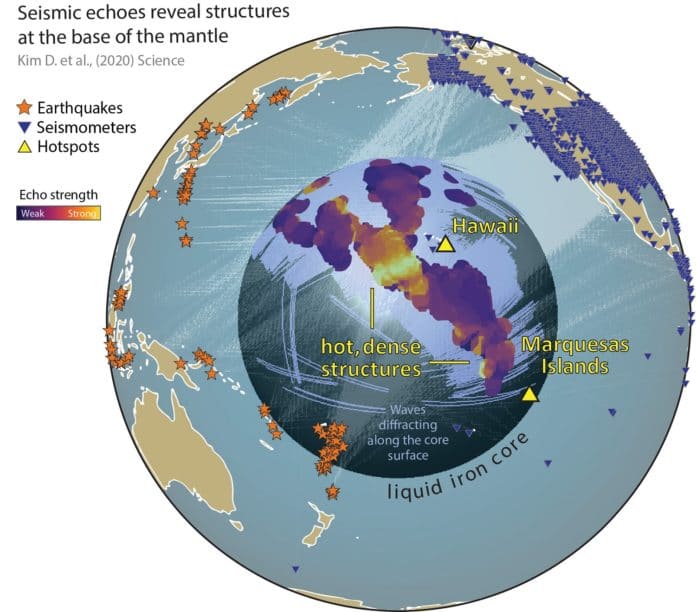Most of what we know about the interior of the Earth comes from the study of seismic waves from earthquakes. These waves contain vital information about the internal structure of the Earth.
However, their task is difficult: they need to wait for an earthquake to record data, and when this happens, it only provides information in a piecemeal manner; the data is restricted to a tiny region and most of the time, it’s impossible to distinguish weaker echoes from noise.
A research team recently used a novel algorithm called the Sequencer that was initially developed to find interesting trends in astronomical datasets and revealed structures deep inside the Earth, paving the way towards a new map showing what Earth’s interior looks like. Using the technique, scientists analyzed thousands of seismograms, or records of vibrations of the ground following an Earthquake, collected over the past 30 years.
The algorithm aided scientists in parsing through thousands of seismograms for echoes to create a new map showing details of the Earth’s mantle, just above the liquid iron core, at a depth of 3,000 kilometers.
This map shows a large area under the Pacific and reveals hot and dense regions below Hawaii and the Marquesas Islands in French Polynesia. Similar to the times when European explorers drew the first incomplete maps of America, earth scientists are charting the Earth’s interior.
Brice Ménard, an astrophysicist at Johns Hopkins University and one of the team members, said, “With this new way to look at the data globally, we were able to see weak signals much more clearly. We were finally able to identify the seismic echoes and use them to create a map.”
Doyen Kim, a seismologist at the University of Maryland and co-author on the paper, said, “Imagine you’re outside in the dark. If you clap your hands and then hear an echo, you know that a wall or vertical structure is in front of you. This is how bats echolocate their surroundings.”
The findings will be in journal Science.
